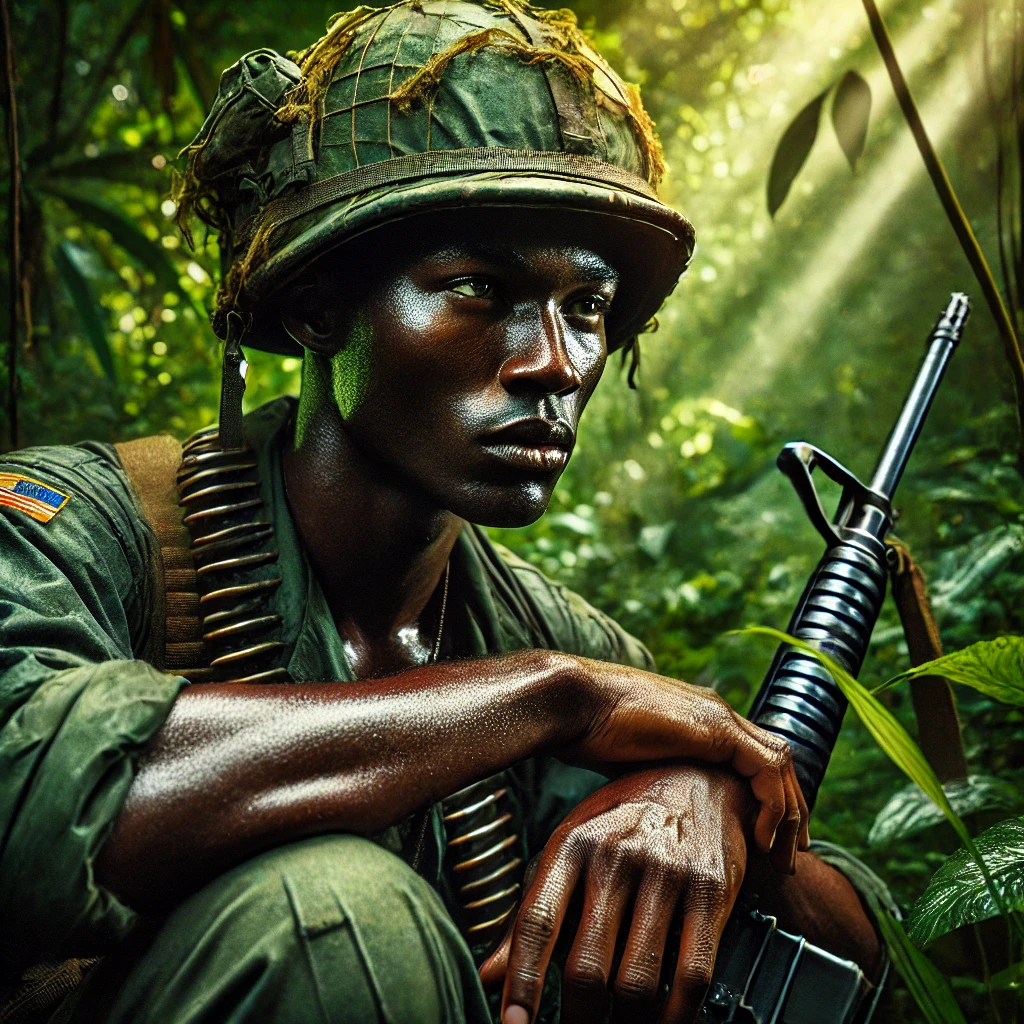Detailed Outline for the Story
Title: The Fire Within
Act I: Roots of Rebellion
1. Prologue: The Spark
- Opening Scene: James Blackman, as a child, listens to his mother tell stories of resilience, including the mythical Black Queen Khina.
- Foreshadowing: The tension between systemic oppression and individual resistance is introduced.
2. India’s Entrance
- Scene: James meets India Carter during a neighborhood game of “Ruff and Tumble.”
- Character Development: India is bold, outspoken, and magnetic. James is quieter but deeply observant.
- Themes: Friendship rooted in shared struggle and unspoken admiration.
3. James’s Early Leadership
- Scene: James stands beside India at a community meeting, supporting her fiery speech against local injustices.
- Subtext: James begins to understand the burden of leadership, even in its smallest forms.
4. Family Expectations
- Scene: A heated conversation between James and his father, Jean-Pierre, about the “safe” route of following family legacy versus fighting for justice.
- Conflict: James feels torn between familial loyalty and his growing commitment to activism.
Act II: Seeds of Awakening
5. High School Resistance
- Scene: India organizes a walkout after a teacher’s racist remark. James supports her, solidifying their partnership.
- Action Sequence: Police and school officials attempt to break up the protest, leading to tense moments.
6. Love and Conflict
- Subplot: James dates Maria, a warm and nurturing influence, while India explores relationships with men who fail to match her intensity.
- Key Moment: James and India realize their emotional intimacy but resist romantic involvement.
7. The Call to Arms
- Scene: James receives a scholarship to college. India gives him a notebook filled with her philosophies and plans for the future.
- Transition: The promise to stay connected becomes a turning point as James prepares to leave.
Act III: The Fight Back Home
8. Campus Activism
- Scene: James encounters student-led protests inspired by India-like figures. He feels alienated, caught between privilege and his activist roots.
9. Letters Across Oceans
- Flashback: Letters from India reveal her rise in the Black Panther Party. James is inspired but feels helpless as the Vietnam War looms.
10. Into the Jungle
- Scene: James, now a decorated officer, faces the brutal realities of war.
- Subtext: The atrocities he witnesses mirror the systemic violence India is fighting back home.
11. India’s Silence
- Scene: The letters from India stop abruptly. James grows despondent, throwing himself into survival.
Act IV: War and Loss
12. The Raid
- Action Sequence: James leads a dangerous mission in Vietnam, discovering an ancient temple with statues of the mythical Queen Khina.
- Symbolism: Khina becomes a representation of resilience and inner strength.
13. India’s Tragedy
- Scene: James learns of India’s death during a protest, killed by state violence.
- Emotional Beat: James spirals into grief, questioning everything he fought for.
14. The Return Home
- Scene: James returns to a changed America. The Black Panther Party is fractured, and the city is aflame with unrest.
- Conflict: James must decide whether to retreat into obscurity or reignite the movement.
Act V: Rebirth Through Legacy
15. Memorial Speech
- Scene: At a two-year memorial for India, James delivers a speech that galvanizes the crowd.
- Key Moment: “Don’t just remember her. Be her. Be the fire they cannot extinguish.”
16. The Final Strike
- Action Sequence: James orchestrates a mass strike that brings the city to a standstill, facing violent police opposition.
- Climax: James is arrested, but his arrest becomes a rallying cry for the movement.
17. The Prison Years
- Scene: James reflects on India’s notebook, finding solace in her words.
- Subtext: The fire of hope is carried by others while James endures incarceration.
18. Legacy of Fire
- Scene: A young activist visits James in prison, seeking guidance. James passes on India’s notebook, symbolizing the continuation of the fight.
19. Epilogue: The Fire Still Burns
- Scene: Years later, murals of James and India adorn city walls, their fight remembered as the spark of lasting change.
- Final Line: “The fire they started burned brighter than ever, carried by hands they would never hold, in a world they had dreamed of but never seen.”
Key Themes
- Sacrifice and Legacy: The cost of fighting for change and the hope that it inspires in others.
- Friendship and Love: The bond between James and India transcends romance, rooted in shared purpose.
- Systemic Resistance: The fight against entrenched oppression, represented by both the war abroad and the struggle at home.
Narrative Techniques
- Flashbacks and Letters: Offer insight into James and India’s shared history, weaving the past into the present.
- Symbolism: The mythical Queen Khina and the flame imagery reinforce themes of resilience and enduring strength.
- Dual Conflicts: James grapples with external battles (war, activism) and internal struggles (grief, identity).
This outline provides a comprehensive structure for the story, ensuring a balance of action, character development, and thematic depth.

Leave a Reply